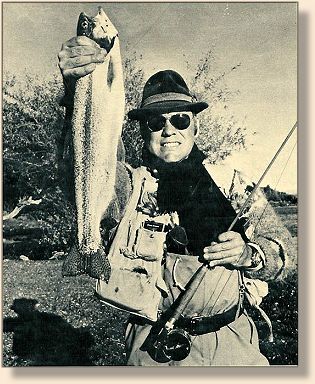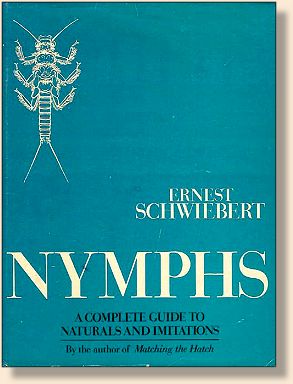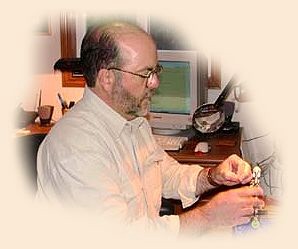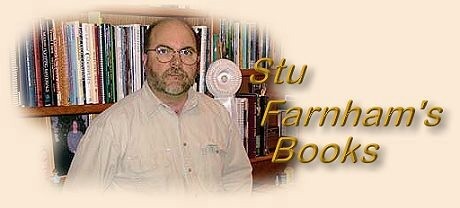|
The Internet is a powerful resource. It provides us instant
access to information, and brings us together via email,
bulletin boards, chat rooms, and instant messaging. FAOL
is a wonderful example of the Internet at its best. The Internet,
however, will never replace the printed page.
I've loved books and fishing since my youngest years, although
I did not start fly fishing until 1993. This column will give
me an opportunity to share reviews of some of my favorite fly
fishing and tying books (and some that are not such favorites)
with my friends here at FAOL. My library reflects my tastes
and interests, and so will this column. It will be heavily
slanted towards cold water fishing and tying for trout and
steelhead, and won't touch much on areas of which I know little,
such as warm or salt water fishing.
I hope that these reviews will motivate some of you to pick up
a good book, on this or any subject, and read.
~ Stu Farnham
Nymphs
Nymphs
by Ernest Schwiebert
Hardcover, 339 pages.
Winchester Press; (March 1973)
ISDN: 0832907464
Ernest Schwiebert seems larger than life to me. The photograph
from the back cover of Nymphs shows him holding a large trout
by the head; the photo projects a vigorous energy. His best
known works are impressive in their scope and impact, and
sometimes - as is the case with this book and Schwiebert's
magnum opus, the 1100+ page, two volume
Trout - in sheer size.


Nymphs is the intersection of two trends in North
American fly fishing: the use of subsurface imitative flies,
as pioneered in the U.S. by James Leisenring, and
entomologically-informed pattern selection, driven in large
part by Schwiebert's own Matching the Hatch.
The book opens with two chapters of history, with the work of
G.E.M. Skues marking the transition between historical and
modern subsurface techniques. The historical section is mostly
British and North American in focus, leading from Bernes, Walton,
Cotton, and Tavener through Pritt and Bergman. Most discussions
of nymph fishing in the UK talk only of Skues; Schwiebert fills
out the picture with references to works by Mottram, Dunne,
Sawyer (who developed the pheasant tail nymph), and Ritz. He
credits Colonel E.W. Harding's 1931 book The Flyfisher
and the Trout's Point of View with having particular
influence on important works such as Marinaro's A Modern
Dry Fly Code, Swisher's & Richard's Selective Trout,
and Schwiebert's own Matching the Hatch. The writings
of E.R. Hewitt and Jim Leisenring were central to the development
of nymph fishing in North America.
After a chapter on tackle considerations, we reach the heart
of the book: almost three hundred pages of detailed entomological
information on the immature forms of North American aquatic insects
of interest to the trout fisher. The writing is Schwiebert at his
finest, combining entomology, story telling, and practical information
on presentation and technique.

The color plates illustrating this book were drawn and colored
by Schwiebert himself. These are incredibly detailed, accurately
rendered drawings of the immature forms of several hundred
species of stonefly, caddisfly, mayfly, and true fly.
For the fly tier there are pattern recipes for many of the species
depicted and discussed in the book.
Nymphs is, unfortunately, long out of print. Used
copies of the hardbound or softcover editions can be purchased,
however, many in fine condition, from used booksellers. The
scientific taxonomy has changed in places since 1973; for
example, the Western March Brown known to present day
entomologists as Rhithrogena Morrisoni was Ephemera
Compar to Schwiebert.
There are many fine (and some not so fine) books for the fly
fisher, and many fine writers. Nymphs, like much of the rest
of the writings of Ernest Schwiebert, is monumental, and deserves
space in the library of the serious fly fisher in North America.
~ Stu Farnham
About Stu
 Stu Farnham is a New Englander by birth, who was transplanted to
and put down roots in Oregon in the early 1990s, now residing in
the Seattle area. A software engineering manager by vocation,
he can be found in his spare time chasing trout and steelhead
in the rivers of the Pacific Northwest, chasing his four Gordon
Setters (who in turn are chasing chukar), tying flies, reading,
or working on his website. Colleen, his long suffering wife of
28 years, is a professionally trained personal chef.
Stu Farnham is a New Englander by birth, who was transplanted to
and put down roots in Oregon in the early 1990s, now residing in
the Seattle area. A software engineering manager by vocation,
he can be found in his spare time chasing trout and steelhead
in the rivers of the Pacific Northwest, chasing his four Gordon
Setters (who in turn are chasing chukar), tying flies, reading,
or working on his website. Colleen, his long suffering wife of
28 years, is a professionally trained personal chef.
|



 Stu Farnham is a New Englander by birth, who was transplanted to
and put down roots in Oregon in the early 1990s, now residing in
the Seattle area. A software engineering manager by vocation,
he can be found in his spare time chasing trout and steelhead
in the rivers of the Pacific Northwest, chasing his four Gordon
Setters (who in turn are chasing chukar), tying flies, reading,
or working on his website. Colleen, his long suffering wife of
28 years, is a professionally trained personal chef.
Stu Farnham is a New Englander by birth, who was transplanted to
and put down roots in Oregon in the early 1990s, now residing in
the Seattle area. A software engineering manager by vocation,
he can be found in his spare time chasing trout and steelhead
in the rivers of the Pacific Northwest, chasing his four Gordon
Setters (who in turn are chasing chukar), tying flies, reading,
or working on his website. Colleen, his long suffering wife of
28 years, is a professionally trained personal chef.
